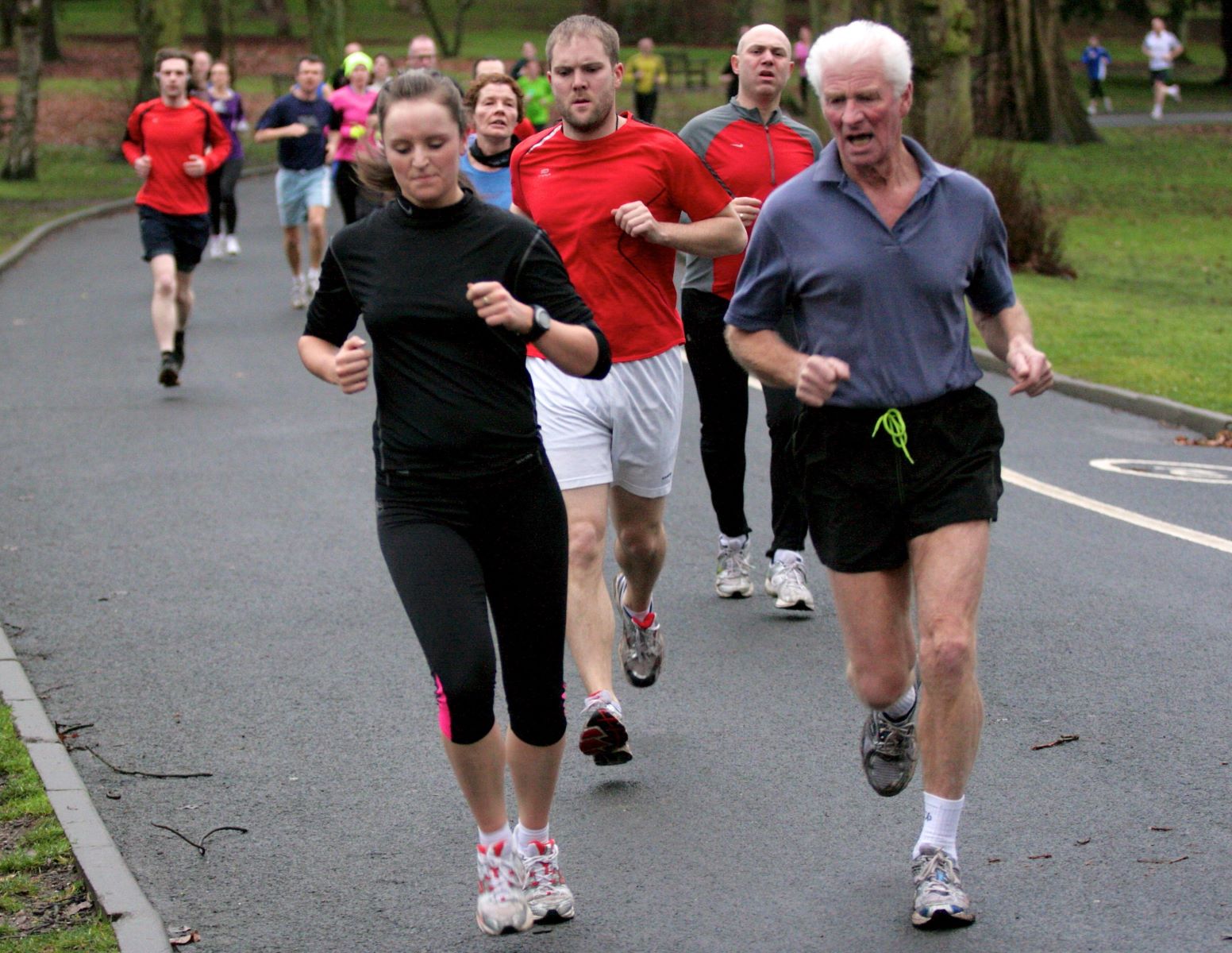Home>Health & Nutrition>Adapting Your Training Based On Your Menstrual Cycle


Health & Nutrition
Adapting Your Training Based On Your Menstrual Cycle
Published: February 20, 2024
Learn how to optimize your training and nutrition based on your menstrual cycle for better health and performance. Discover the best strategies for adapting your fitness routine to support your overall well-being.
(Many of the links in this article redirect to a specific reviewed product. Your purchase of these products through affiliate links helps to generate commission for Therunningadvisor.com, at no extra cost. Learn more)
Table of Contents
Understanding Your Menstrual Cycle
Understanding your menstrual cycle is crucial for optimizing your training and overall well-being. The menstrual cycle is divided into four phases: the menstrual phase, the follicular phase, ovulation, and the luteal phase. Each phase is characterized by distinct hormonal fluctuations and physiological changes that can impact your energy levels, strength, and endurance.
-
Menstrual Phase: This phase marks the beginning of your cycle and is characterized by the shedding of the uterine lining. Hormone levels, particularly estrogen and progesterone, are at their lowest during this time. Many women experience fatigue and discomfort during this phase, which can affect their training performance.
-
Follicular Phase: As the menstrual phase ends, the follicular phase begins. Estrogen levels gradually rise, leading to an increase in energy and endurance. This phase is an ideal time for high-intensity workouts and strength training, as your body is more responsive to physical exertion.
-
Ovulation: Ovulation occurs around the middle of the menstrual cycle when the ovary releases an egg. Estrogen levels peak during this phase, contributing to heightened energy levels and improved muscle function. It's an excellent time for challenging workouts and pushing your limits.
-
Luteal Phase: The luteal phase follows ovulation and is characterized by a rise in progesterone levels. This hormonal shift can lead to increased water retention and a decrease in energy levels. It's important to listen to your body during this phase and adjust your training intensity accordingly.
By understanding the nuances of each menstrual phase, you can adapt your training regimen to align with your body's natural rhythms, optimizing your performance and minimizing the risk of injury. This awareness empowers you to make informed decisions about the type, intensity, and duration of your workouts, ultimately enhancing your overall fitness journey.
Tailoring Your Workouts to Your Menstrual Phase
Adapting your workouts to align with your menstrual phase can have a profound impact on your training effectiveness and overall well-being. By tailoring your exercise routine to accommodate the hormonal fluctuations and physiological changes that occur throughout your menstrual cycle, you can optimize your performance and minimize the risk of injury.
During the menstrual phase, when estrogen and progesterone levels are at their lowest, many women experience fatigue and discomfort. It's essential to listen to your body during this time and prioritize gentle, low-impact activities such as yoga, Pilates, or walking. These exercises can help alleviate menstrual symptoms while promoting blood flow and relaxation.
As you transition into the follicular phase, characterized by rising estrogen levels, your energy and endurance increase. This phase is ideal for incorporating high-intensity workouts, strength training, and cardiovascular exercises into your routine. Engaging in challenging workouts during this time can capitalize on your heightened physical capabilities and contribute to significant fitness gains.
Ovulation, marked by the peak of estrogen levels, presents an opportunity to push your limits and engage in demanding workouts. Capitalize on the surge in energy and improved muscle function by incorporating intense interval training, weightlifting, or high-impact activities. Embracing the heightened physical capacity during ovulation can lead to enhanced strength and performance gains.
Transitioning into the luteal phase, characterized by a rise in progesterone levels, may bring about increased water retention and a decrease in energy levels for some individuals. During this phase, it's important to prioritize workouts that are gentler on the body, such as moderate-intensity strength training, swimming, or cycling. These activities can help maintain fitness levels while accommodating the body's natural fluctuations.
By tailoring your workouts to correspond with your menstrual phase, you can harness the ebb and flow of your body's hormonal patterns to optimize your training. This approach not only enhances your physical performance but also fosters a deeper connection with your body, promoting overall well-being and empowering you to achieve your fitness goals in harmony with your natural cycle.
Nutrition and Hydration Tips for Each Phase
Menstrual Phase
During the menstrual phase, prioritizing nutrient-dense foods can help alleviate symptoms and support overall well-being. Iron-rich foods such as leafy greens, lean red meat, and legumes can help replenish iron lost during menstruation, combating fatigue and promoting energy levels. Additionally, incorporating foods high in omega-3 fatty acids, such as salmon, chia seeds, and walnuts, can help reduce inflammation and alleviate menstrual cramps. Staying well-hydrated is crucial, so aim to increase your water intake and opt for hydrating foods like cucumbers, watermelon, and oranges.
Follicular Phase
As estrogen levels rise during the follicular phase, focusing on nutrient-rich meals that support energy and endurance is key. Incorporating complex carbohydrates such as whole grains, sweet potatoes, and quinoa can provide sustained energy for workouts. Including lean proteins like chicken, tofu, and lentils supports muscle recovery and strength. Hydration remains essential, so consuming water-rich fruits like berries, melons, and citrus fruits can aid in maintaining optimal hydration levels.
Read more: Marathon Training: A 10-Day Cycle
Ovulation
During ovulation, prioritizing foods that support muscle function and energy production can enhance workout performance. Including lean proteins such as eggs, Greek yogurt, and lean beef can aid in muscle repair and strength development. Complex carbohydrates like brown rice, oats, and whole grain pasta can provide lasting energy for intense workouts. Staying well-hydrated is crucial, so incorporating hydrating foods like cucumbers, celery, and tomatoes can contribute to maintaining fluid balance.
Luteal Phase
As progesterone levels rise during the luteal phase, focusing on nutrient-dense foods that support mood and energy levels is essential. Incorporating foods rich in magnesium, such as spinach, almonds, and pumpkin seeds, can help alleviate mood swings and reduce water retention. Including complex carbohydrates and healthy fats, such as avocados, nuts, and whole grains, can support sustained energy levels. Hydration remains crucial, so consuming water-rich foods like cucumbers, lettuce, and zucchini can aid in managing fluid retention and promoting overall hydration.
By aligning your nutrition and hydration with each phase of your menstrual cycle, you can optimize your energy levels, support muscle function, and alleviate symptoms, ultimately enhancing your overall well-being and performance. These tailored dietary strategies empower you to work in harmony with your body's natural rhythms, fostering a holistic approach to health and fitness.
Recovery and Rest During Your Menstrual Cycle
Recovery and rest play a pivotal role in optimizing your training outcomes and overall well-being throughout your menstrual cycle. Understanding the impact of hormonal fluctuations on your body can guide you in tailoring your approach to recovery, ensuring that you provide the necessary support for your physiological needs.
During the menstrual phase, when estrogen and progesterone levels are at their lowest, your body may be more susceptible to fatigue and discomfort. This phase calls for a focus on gentle recovery practices that promote relaxation and alleviate menstrual symptoms. Incorporating restorative yoga, meditation, and gentle stretching can help soothe muscle tension and enhance overall well-being. Embracing adequate rest during this phase is essential for allowing your body to recuperate and replenish energy reserves.
As you transition into the follicular phase, characterized by rising estrogen levels, your body's capacity for physical exertion increases. This phase presents an opportunity to engage in active recovery strategies that support muscle recovery and flexibility. Integrating light, low-impact activities such as swimming, cycling, or leisurely walks can promote blood circulation and aid in muscle recovery while aligning with your heightened energy levels.
Ovulation, marked by the peak of estrogen levels, signifies a period of heightened physical capacity. While it's a favorable time for challenging workouts, it's equally important to prioritize adequate rest and recovery to support your body's increased demands. Embracing sufficient sleep, typically 7-9 hours per night, is crucial for muscle repair, hormone regulation, and overall recovery. Additionally, incorporating relaxation techniques such as deep breathing exercises and gentle mobility work can aid in managing stress and promoting recovery.
Transitioning into the luteal phase, characterized by a rise in progesterone levels, your body may experience fluctuations in energy levels and increased water retention. This phase calls for a balanced approach to recovery, emphasizing both active and passive strategies. Engaging in moderate-intensity activities such as restorative yoga, light strength training, or leisurely cycling can support muscle recovery while accommodating your body's natural fluctuations. Prioritizing quality sleep and relaxation practices is essential for promoting overall well-being and aiding in symptom management during this phase.
By aligning your approach to recovery and rest with the nuances of your menstrual cycle, you can optimize your body's natural rhythms, support muscle recovery, and enhance overall well-being. Embracing tailored recovery practices throughout each phase empowers you to cultivate a harmonious relationship with your body, ultimately fostering a holistic approach to training and well-being.
Tips for Managing Symptoms During Exercise
Managing symptoms during exercise, especially in the context of the menstrual cycle, is crucial for optimizing performance and promoting overall well-being. Understanding how hormonal fluctuations can impact your body during different menstrual phases empowers you to implement effective strategies to mitigate discomfort and enhance your exercise experience.
Menstrual Phase
During the menstrual phase, many women experience symptoms such as fatigue, cramps, and bloating. To manage these symptoms during exercise, consider incorporating gentle, low-impact activities such as yoga, Pilates, or walking. These exercises can help alleviate discomfort while promoting blood flow and relaxation. Additionally, wearing comfortable and supportive workout attire can contribute to enhanced comfort and mobility during this phase.
Follicular Phase
As estrogen levels rise during the follicular phase, you may experience increased energy and endurance. To optimize your exercise experience, consider engaging in high-intensity workouts, strength training, and cardiovascular exercises during this phase. It's important to listen to your body and adjust the intensity of your workouts based on how you feel, allowing for a balanced approach to exercise.
Read more: Marathon Training: A 10-Day Cycle
Ovulation
During ovulation, when estrogen levels peak, you may feel a surge in energy and improved muscle function. To manage symptoms during exercise, capitalize on this heightened physical capacity by incorporating intense interval training, weightlifting, or high-impact activities. Staying well-hydrated and taking regular breaks as needed can help support your body's increased demands during workouts.
Luteal Phase
In the luteal phase, characterized by a rise in progesterone levels, you may experience symptoms such as water retention and decreased energy levels. To manage these symptoms during exercise, consider prioritizing moderate-intensity activities such as strength training, swimming, or cycling. Being mindful of your body's signals and adjusting your workout intensity and duration can help accommodate the fluctuations in energy levels and promote a comfortable exercise experience.
By implementing these tailored strategies to manage symptoms during exercise according to your menstrual phase, you can optimize your training while minimizing discomfort. Listening to your body, staying well-hydrated, and choosing appropriate exercises based on your energy levels and physical comfort are key components of effectively managing symptoms during exercise throughout your menstrual cycle.














